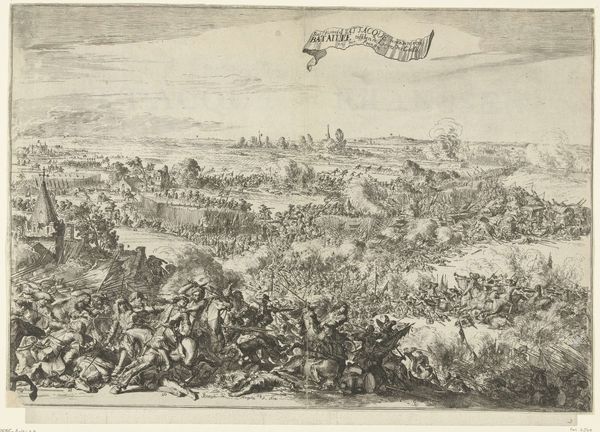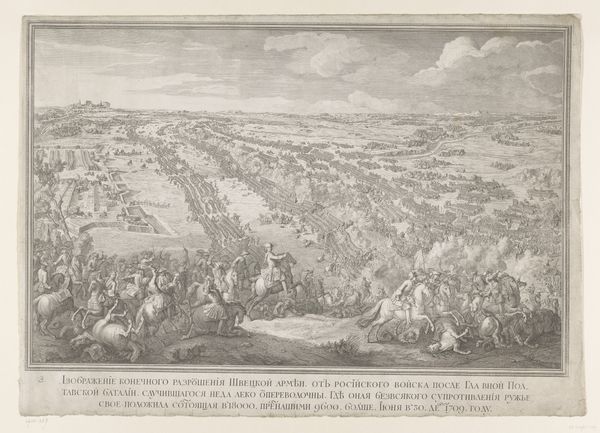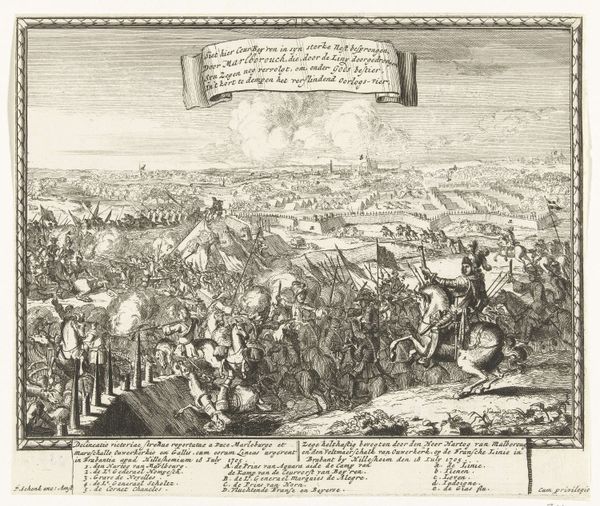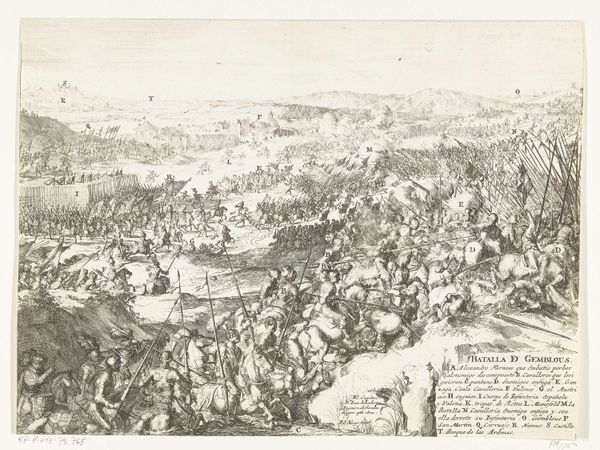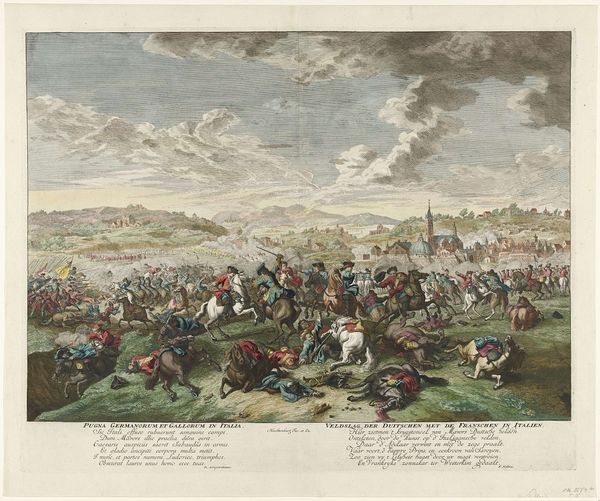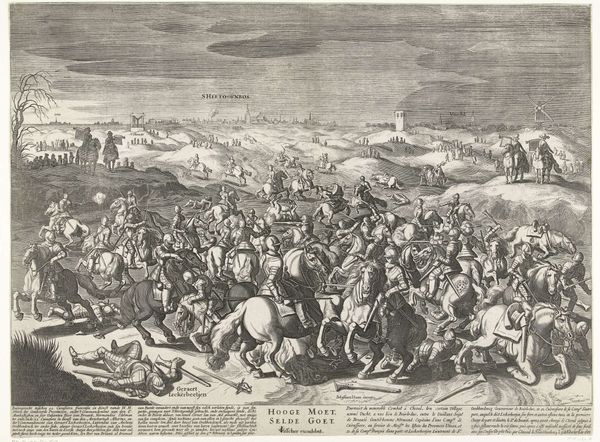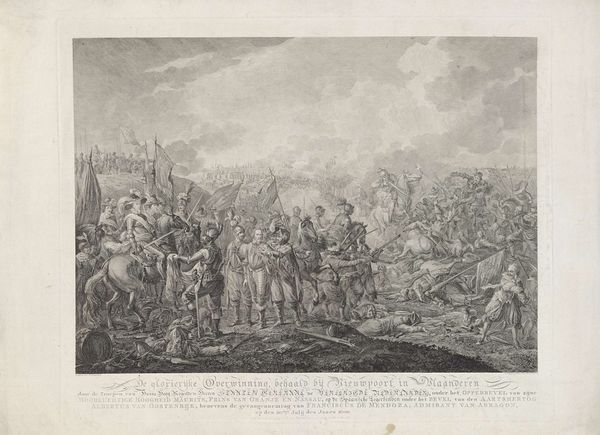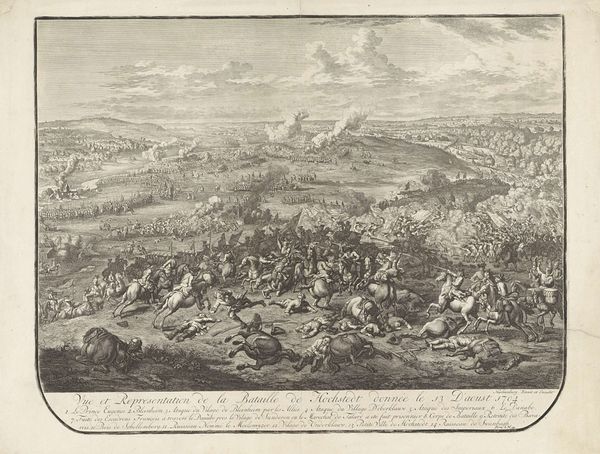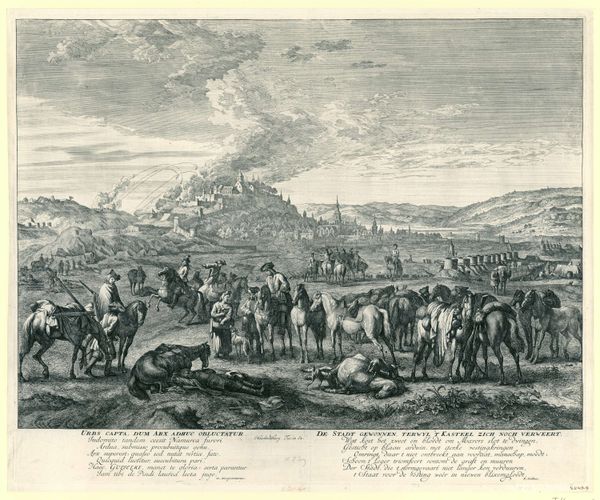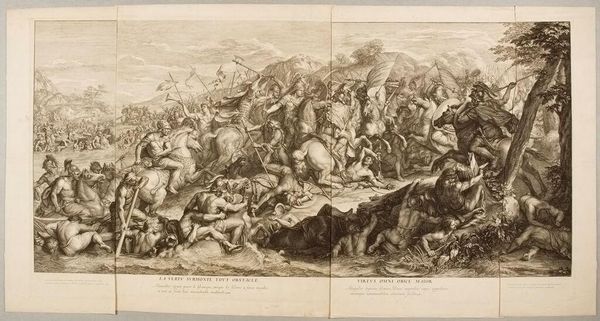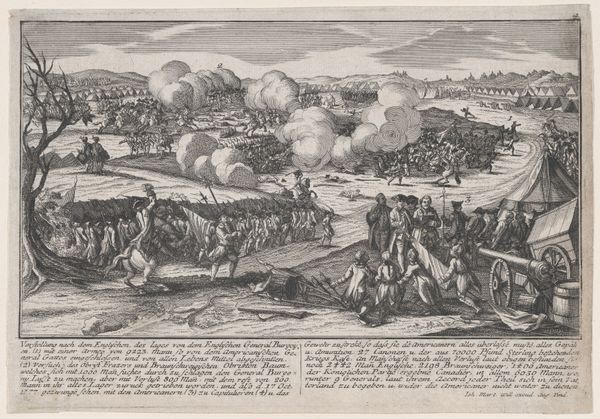
print, engraving
#
narrative-art
#
baroque
# print
#
landscape
#
figuration
#
line
#
history-painting
#
engraving
Dimensions: height 478 mm, width 597 mm
Copyright: Rijks Museum: Open Domain
Curator: I’m drawn to the detail in this print entitled, "Slag bij Staffarda, 1690," rendered by Jan van Huchtenburg. It was produced sometime between 1695 and 1729, so it wasn't an immediate record of the battle. Editor: It strikes me as a carefully constructed chaos. The foreground is strewn with the bodies of men and horses, yet in the distance, we see ordered lines of soldiers, a serene landscape. Curator: War was often romanticized in art during this era. The battle scene is symbolic, yes, but it’s equally a depiction of power, both terrestrial and divine. Consider the symbolic function of the horses: They're embodiments of nobility and military might. Their chaotic arrangement hints at vulnerability of men in power. Editor: The choice of engraving also speaks to something. Its reproductive nature allowed for wide distribution. So this isn’t just about recording the event but crafting a narrative, maybe a specific interpretation, accessible to a broader public. The crisp, clean lines belie the grit and gore of war, almost sanitizing the brutality. Curator: Engravings, like many prints, have dual functions. It's partly informational, showing a historical battle in considerable detail. But it also communicates ideals: courage, strategy, perhaps even the divine right to rule or, in this case, engage in conflict. Look how Huchtenburg arranges figures almost theatrically in the foreground to underscore these qualities. Editor: But who would have commissioned such work and what kind of relationship existed among the engraver, painter, and publisher in 17th-century printmaking? These images are documents of specific relationships and dependencies within a competitive production landscape. Curator: Well, seeing the outcome, someone wanted this particular slant circulated in great numbers. Editor: It reminds us that representations of battles aren't neutral. They reflect agendas, technologies, and socio-economic relationships involved in their creation and dissemination. Curator: Indeed. And Huchtenburg successfully combined artistry and propagandistic zeal, reflecting enduring interest in power. Editor: Power struggles both literal and artistic! I will contemplate how the making mirrors the message.
Comments
No comments
Be the first to comment and join the conversation on the ultimate creative platform.
